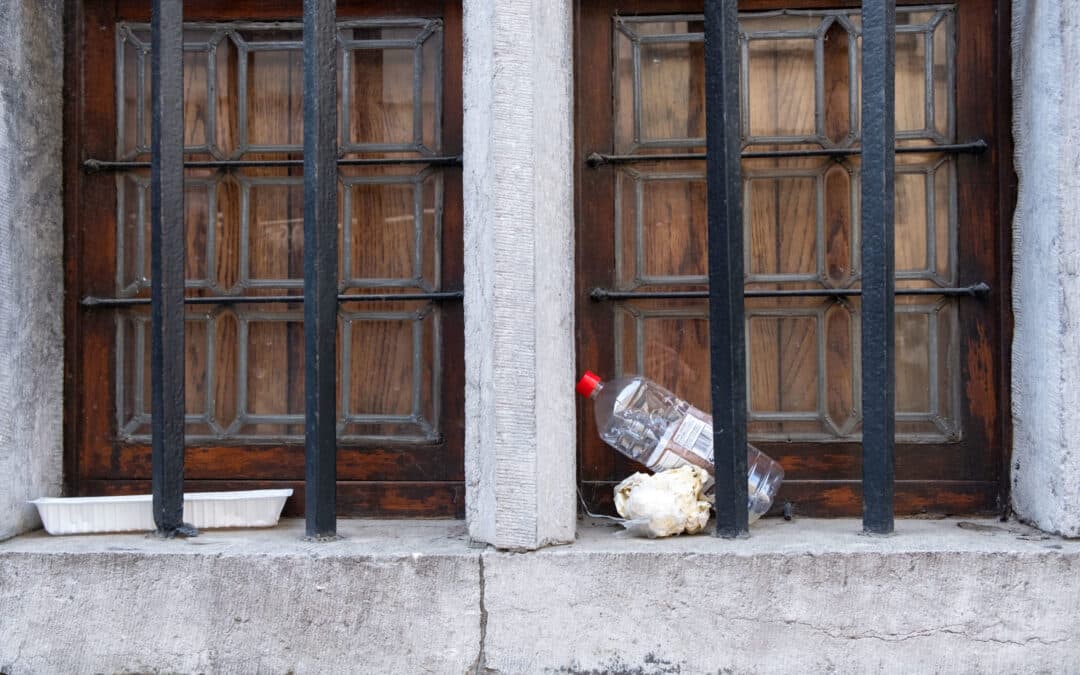A year ago, the Belgian industry was asked to prove that their proposition of a digital deposit system (DDRS) is a better solution against litter than the classic deposit system. We share our conclusions about what the pilots have taught us (or not) and about the sounding board process.
SOUNDING BOARD GROUP FOR PILOT PROJECTS: PUBLIC TRANSPARENCY OR Masquerade?
When the pilot projects started to test “digital deposits” in 2023, a sounding board was set up, consisting of environmental, consumer and organizations fighting against poverty.
What was the purpose? As the Flemish Minister of the Environment Zuhal Demir herself said “ There will be a sounding board that will include environmental organizations that can also transparently query, share, consult and analyze all information ” (Plenary meeting January 18, 2023). Transparency and constructive feedback from public stakeholders were therefore the aims. This was necessary, given the over-representation of the industry in the pilots. A few examples:
- Who was in charge of rolling out the pilots? The industry (Fost Plus).
- Who has three seats in the pilot steering group? The industry (Fost Plus, Comeos, Fevia).
- Who was heard in a first hearing in July and is the only stakeholder invited to tomorrow’s hearings together with OVAM?
Yes, you guessed it right: the industry (Fost Plus).
Isn’t it a bit like asking a student to design their own test and then grade it? As Zuhal Demir said, “the pen is held by OVAM and by our services” (January 18 2023), so Fost Plus should have no say in the pilots. The fact that the steering group was able to view and review the OVAM final report truly shows who was ‘holding the pen‘.
So one can wonder: have the members of the Sounding Board been heard in their feedback? Hard to say, because we haven’t seen the final report yet. This makes it difficult to know whether our advice has been taken into account.
And yes, we were able to provide feedback during the various rounds of pilots. But this has not been made easy for us. For example:
- After the third (and last) round of pilots, we had to request additional follow-up meetings.
- The preparatory materials for the meetings (more than 150 pages) were sent at the last minute (e.g. less than 48 hours in advance) despite several requests to get the agenda on time.
- The OVAM also published press releases about the progress of the pilots, without involving or informing the sounding board group. The press release of November 15 even appeared a few hours before the meeting with the sounding board group and already contained preliminary conclusions about the pilots. What was the point of meeting if the conclusions were already set?
Today, Wednesday December 13, hearings are taking place to discuss the final results. In light of these upcoming hearings, we share our own assessment of the five evaluation criteria determined by OVAM to which the pilots must be able to provide an answer.
DIGITAL DEPOSIT PILOT PROJECTS: WHAT HAVE WE LEARNED?
Despite the industry’s best efforts and all the work (and money) put into those pilots, we have to be realistic. The results are insufficient to confirm whether digital deposits can be effectively set up by 2025 and – even more worrying – whether it would actually contribute to reducing the amount of packaging in litter.
1. Effectiveness: what are the real benefits of digital deposits?
No measurable return rate
The ‘scan ratio‘ (“quantity scanned” / “quantity sold”) is interesting to look at, but does not say much about the ‘return percentage’ (packaging that is collected in a certified manner). One must reckon that at most 1 in 4 potential users (25%) has used the system, which remains very low.
Impact on litter: we don’t know more than before
This was the most important and expected result. The whole point of the pilots was to see whether digital deposits reduce the presence of packaging in litter.
The answer is simple: we know no more about this than a year ago. That’s a fact.
Both the pilots in Bobbejaanland and Center Parks De Haan did not yield significant results. This was even mentioned by the consultancy firm engaged for the occasion (Normec-OWS). This is due to methodological errors such as the lack of a post-measurement (to compare results) but also the ignorance of consumption patterns.
An example: A simple calculation (see our spreadsheet) of the Bobbejaanland results highlight the inaccuracy of results (Report 1a. p33). When neutralizing the quantities sold in the park*, we see that the ratio (“amount of litter” / “amount of drinks sold”) has remained comparable during the pilots. A slight increase can even be observed.
The pilots did not measure a significant impact on litter. Any attempt to conclude otherwise is misleading and untrue.
The most threatening result is the fact that ‘deactivated‘ packaging can still end up in litter. The presence of 32 packages with a unique code in litter in the De Haan pilot shows the limited effect of this system. Much worse is that 28% of the packaging found in litter was deactivated (9 units). Users can get their money back, while the packaging still ends up in litter.
*we must recognize that this only reflects a trend in purchasing behavior and not the full spectrum of purchasing behavior – as drinks can also be purchased outside the theme park.
2. Accessibility: can everyone use the system?
Digital deposit return system is claimed to be more accessible because anyone can use it anywhere, 24/7. However, not everyone has access to a smartphone, internet or a bank account (e.g. refugees, people in a situation of over-indebtedness or homelessness). Home scanners were offered as a solution to this problem. While this is interesting at home, this doesn’t solve the problem “on-the-go”. The most ‘vulnerable’ part of the population would remain excluded from the system where littering occurs. Doing more of what already works is not a solution. This will also not be a solution for the million tourists traveling through Belgium. The barrier for them to participate in the system will be very high compared to a ‘classic’ system (downloading and registering on an app versus bringing back to store).
Non-representativeness: During the pilots, the system was only used by a small (non-representative) part of the population: bank employees or students, visitors to an amusement park, families in a Center Park and only a few residents of a shopping street. This does not say much about the entire population. Methodologically, the surveys conducted are of little value because they were mainly shared with users. As users have already agreed to participate, they are likely to be more positive about the system than the average consumer (i.e. response bias). Valuable information would have required investigating why non-users (3/4 of potential users) did not use the system.
Here too, much more research would be needed to conclude that the system is accessible to all consumers of plastic bottles and cans.
3. Fraud resistance: can people abuse the system?
The industry claims that fraud was successfully prevented during the pilot projects. However, issues with large-scale fraud such as cyber attacks (i.e. hacking the system to gain access to all unique codes generated) were not resolved.
The industry is also proposing to activate the codes on the production lines, which, as we mentioned about a year ago, would invariably lead to many fraud attempts. People can be very creative when it comes to abusing systems to get money. And digital deposit systems (compared to traditional systems) seem to offer many more options for doing this, because people do not have to properly return their packaging to get their money back.
A few examples:
- In KBC Leuven, people tried to take photos of the QR-codes in the machines to get their money back;
- In Bobbejaanland, more than 1 in 10 users tried to abuse the system: Bins were moved. These were new attempts at fraud that we had not even anticipated a year ago.
4. Compliance with GDPR / Privacy legislation
This dimension relates to the security of data management and compliance with the GDPR rules for digital deposits. The industry ensures that secure data management is possible and that the system is GDPR compliant. But that does not reduce the risk of citizens not wanting to participate in the system due to distrust or fear – as seen in Bobbejaanland with 1 in 4 users unable to participate because they had deactivated their geolocation. Especially considering that permission to share geolocation was required in the last two pilots to use the system. Can you honestly force people to provide their geolocation to get their money back?
Furthermore, the fact that the data was kept ‘safely’ during the pilots cannot predict that a real scenario such as misuse of the data for commercial purposes will arise in the long term. This is not something new and has happened in other contexts.
5. Operational applicability / performance
The question is whether this system will work before 2025. Although the industry claims that the system has proven to work, we still have many concerns. Because working ‘technically’ is different from ‘working for users’. A few points for example:
- Connection Requirements : Users must have access to WiFi/data service to get their refund. This has already been reported as a problem within the pilots (and has led to many daily reports and requests for assistance). In real life this will necessarily happen more, as Belgium is not an amusement park with assistance available 24/7. Think about it: how do you report a network problem… if you do not have access to the network? Most people would simply give up using the system.
- Geolocation is needed for the system to work, which can be a problem in remote areas or if consumers don’t want to share their data.
- The readability of the code was above 99%. At the same time, it was confirmed that some people were having problems with their smartphone camera (e.g. Huawei). It should also be taken into account that people may have simply given up using the system without reporting any issues (as it takes time and commitment to report issues).
- Serialization : Although some packaging is ‘pre-printed’ with unique 2D codes for the pilot projects, it remains unclear what the costs of such serialization are (loss of speed on filling lines). Is this really possible for an entire country and for all producers (small, large, from other countries)?
Even after the pilot projects, the operationality of a digital deposit still poses many questions at the scale of the whole of Belgium.
These pilots alone have never answered all the questions that need to be answered to ensure that the digital deposit system is ready for introduction in 2025. For example, with regard to possible trade barriers in the European internal market, compatibility of the digital system with reuse, which are uncertainties that need to be taken into account and that could potentially delay the introduction of a digital deposit system.
Note: For a more detailed evaluation per pilot, we have also looked in detail at the evaluation reports (from Fost Plus) on the Bobbejaanland and Center Parks pilots.
It is now time for the Flemish government to make a decision and follow up on what has been promised. We simply don’t know any more about the potential benefits of a digital deposit than we did a year ago. And Flemish Minister of the Environment Zuhal Demir is clear: “For me, the choice [of system] is really: easy, user-friendly and contributing to less litter” (Plenary meeting 22/11/2023). At the moment, opting for a digital system would not have a positive impact on litter, but would rather be giving in to the industry lobby.

